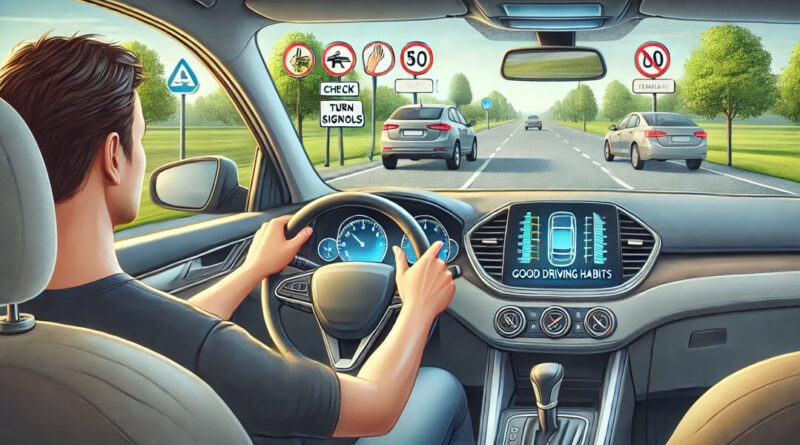Good Driving Habits That Keep Your Car Running Smoothly
Let’s be real—your car is one of your biggest investments, and how you drive has a huge impact on its lifespan, fuel economy, and even your safety on the road. The good news? A few simple driving habits can help you avoid costly repairs, improve fuel efficiency, and keep your car running like new for years to come.
If you love your car (or just hate paying for unnecessary repairs), here are some smart driving habits you should start following today.
1. Take It Easy on the Gas and Brakes
You might love the thrill of fast acceleration or stopping at the last second, but your car definitely doesn’t.
Why It’s Bad for Your Car:
Burns more fuel—hard acceleration kills fuel economy.
Wears out brake pads faster—aggressive braking overheats and damages brakes.
Puts stress on the engine and transmission—which can lead to expensive repairs.
Better Driving Habit:
Accelerate gradually and maintain a steady speed.
Keep a safe following distance so you don’t need to slam the brakes.
Anticipate stops—start slowing down earlier instead of braking hard.
Your wallet (and your car) will thank you.
2. Stick to the Speed Limit
Speeding doesn’t just get you fined—it can actually wreck your car faster. To pass your driving test you will have to learn various signs.
How Speeding Hurts Your Car:
Increases engine wear—high speeds put extra strain on the motor.
Burns through fuel faster—more speed = higher fuel consumption.
Shortens tire life—driving too fast causes uneven tire wear.
Better Driving Habit:
Stick to moderate, steady speeds—your fuel efficiency improves dramatically.
Use cruise control on highways to avoid constant speed changes.
Remember—speeding barely saves time but adds wear to your car.
3. Don’t Ride the Clutch (For Manual Cars)
If you drive a manual, resting your foot on the clutch pedal without realizing it is a common bad habit.
Why It’s a Problem:
Wears out the clutch faster—leading to expensive replacements.
Hurts fuel efficiency—keeping the clutch partially engaged increases drag.
Shortens the lifespan of your transmission.
Better Driving Habit:
Only press the clutch when shifting gears.
Remove your foot completely when driving normally.
Shift at the right RPM to avoid extra strain.
Clutch repairs aren’t cheap—treat it well, and it’ll last much longer.
4. Don’t Overload Your Car
Think of your car like a backpack—the heavier it is, the harder it has to work.
Why Carrying Too Much Weight is Bad:
Higher fuel consumption—extra weight burns more fuel.
Faster wear on brakes and tires—heavier loads reduce braking efficiency.
Worse handling—your car won’t respond as well on turns or stops.
Better Driving Habit:
Remove unnecessary junk from your car.
Avoid carrying heavy loads for long periods unless necessary.
Check your car’s weight capacity in the manual.
A lighter car = better fuel economy and a smoother ride.
5. Stick to Your Maintenance Schedule
Taking care of your car isn’t just about driving well—you also need to stay on top of maintenance.
The Essentials You Shouldn’t Skip:
✔️ Regular oil changes—keeps the engine lubricated and running smoothly.
✔️ Check tire pressure—improves fuel efficiency and prevents tire wear.
✔️ Replace brake pads when needed—worn-out brakes are dangerous and expensive to fix later.
✔️ Check fluid levels—coolant, transmission fluid, and brake fluid all matter.
✔️ Follow your service schedule—your car’s manual tells you when key parts need replacing.
A little maintenance now prevents big (expensive) repairs later.
6. Always Use the Parking Brake (Even in Automatics)
Think the parking brake is just for manual cars? Think again.
Why It’s Important:
✔️ Prevents strain on your transmission when parked.
✔️ Reduces the risk of rolling—especially on hills.
✔️ Helps keep your brake system in good condition.
Better Driving Habit:
✅ Use the parking brake every time you park.
✅ Avoid pulling it too hard—a gentle but firm application is enough.
✅ Make sure to release it completely before driving off.
A well-maintained parking brake = longer transmission life and fewer surprises.
7. Warm Up Your Car the Right Way
Warming up your car for too long in winter isn’t doing it any favors.
Why Excessive Idling is Bad:
❌ Wastes fuel—modern engines don’t need long warm-ups.
❌ Causes carbon buildup—leading to engine deposits and inefficiency.
❌ Can damage engine components over time.
Better Driving Habit:
✅ Idle for just 30 seconds to 1 minute, then drive gently.
✅ Avoid revving the engine when it’s cold.
✅ Let the car warm up naturally as you drive.
8. Don’t Run on an Empty Fuel Tank
Letting your fuel level get too low can actually damage your car.
Why It’s Bad:
❌ Dirt & debris at the bottom of the tank can clog fuel injectors.
❌ The fuel pump needs fuel to stay cool—low levels can cause overheating.
❌ If fuel runs out completely, it can damage your engine components.
Better Driving Habit:
✅ Always keep at least a quarter tank of fuel.
✅ Don’t wait for the low fuel warning—fill up early.
✅ Before long trips, top up your tank to avoid running dry.
Final Thoughts: Drive Smarter, Not Harder
Driving well isn’t just about being safe—it also keeps your car in top shape, saves you money, and makes driving a lot more enjoyable.
Recap of Good Driving Habits:
✔️ Drive smoothly—avoid aggressive acceleration and braking.
✔️ Stick to speed limits—it helps your fuel efficiency and your wallet.
✔️ Keep up with maintenance—small fixes now prevent big repairs later.
✔️ Lighten the load—less weight = better fuel economy.
✔️ Use the parking brake properly—even in automatics.
✔️ Refuel before running low—don’t risk damaging your fuel system.
Your car takes care of you—so take care of it in return!
Buying a used VW. Buying used vauxhall, BMW, Jaguar, Ford, Volvo, Range rover, Bentley, Aston Martin, Porsche, Ferrari, Lamborghini, Maserati, Hyundai, Tesla, Honda, Pagani

